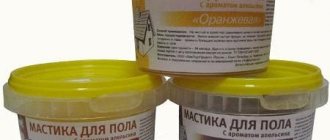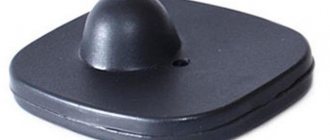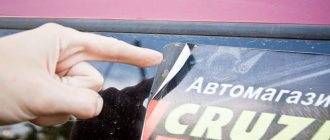A manicure made using gel polish is quite durable. This design can be worn for about two weeks without losing its brightness and shine. But such properties are only possible when using the right manicure technology. By performing all procedures in accordance with the application rules, you will easily achieve positive results.
Beautiful manicure
One of the frequently asked questions among nail art beginners is whether the sticky layer is removed from gel polish. Let's take a closer look at why, and most importantly, how, you can remove it.
What is the sticky layer and why does it remain?
When performing a manicure at home, enterprising young ladies take into account many points: the quality of the coating itself and accompanying decorative materials, sharpening the working edges of scissors or tweezers, as well as the optimal abrasiveness of the nail file. All this is under the sensitive attention of the craftswoman. The one thing that is often overlooked is removing the sticky layer. No, no, we are not talking about the standard removal of stickiness from the finishing top, but about the dispersion layer of the classic gel.
In order to answer the question asked 100% correctly, it is important to understand what exactly the mixture contained in the shellac bottle consists of. In fact, contrary to popular belief, the entire periodic table is not hidden behind transparent glass walls. Most often, the following ingredients can be seen in the formula:
| Formula Component | Its purpose |
| Plasticizers | Particles of a substance that gives the polymerized gel elasticity and plasticity. Plasticizers are especially important at the moment when there is a mechanical effect on the nail plate. It is the quality of the plasticizer raw material that determines whether the coating will be chipped or not. |
| Polymers | Another mandatory item in the list of ingredients of any gel polish. Polymers are designed to improve durability and increase the degree of adhesive adhesion of natural nail keratin to artificial coating. It is logical that in expensive varnishes the plasticizers are also of higher quality, while in budget ones they are cheaper |
| Solvents | It is a mistake to believe that polymerization is an ordinary process of hardening varnish under a UF or LED lamp. In fact, polymerization is the process of evaporation of solvents from the surface of the coating, due to which it hardens |
| Silicates | An auxiliary ingredient that should also be included in any varnish. Silicates control the degree of pigment settling and prevent the varnish from delaminating; they are also responsible for the overall viscosity of the consistency |
| Titanium dioxide | Another “chemical” ingredient. Essentially, this is a snow-white pigment that is added to almost every gel polish to emphasize the intensity of the original shade. |
| TSF | Perhaps the most “controversial” component of varnish. It is designed to improve the degree of adhesion of the coating and the nail plate, which directly affects the durability of the manicure. But such an additive is safe only in the absence of formaldehyde. Read the ingredients carefully |
| Mica | The component thanks to which we observe a delicate pearl shimmer. Essentially, mica is an accumulation of finely dispersed reflective particles that block direct sunlight or artificial rays |
| Camphor | The same plasticizer, but of natural origin. At the moment, camphor is being removed from use, as it is a powerful allergen. |
This, perhaps, is the entire “base” on the basis of which shellac or gel polish is then formed. Naturally, each of the presented components directly affects the quality of the coating itself, its intensity and durability, but part of the responsibility for this also lies with the master who processes the nail plates. So what is this sticky layer of shellac? Essentially, polymerization is the process of turning a measure into a viscous but liquid consistency, which gradually hardens under UF or LED lighting by evaporating solvents. As a result of this metamorphosis, a sticky layer called a dispersion layer is formed on the hard surface. It is needed for adhesion of materials of different nature. In the case of gel manicure, to increase the adhesive ability of the artificial gel and natural keratin contained in the nails.
In other words, dispersion is a by-product of drying the gel coating, necessary for better bonding of all layers of the gel and the natural nail. And answering the question: “Do I need to remove the sticky layer from the base?” – the answer is clear – “No!” A sticky layer is simply necessary so that all layers of the manicure - base, color and top - adhere well to each other. When removing the dispersion, both from the base and from the color layers, the manicure loses its strength; it chips and peels off from the nail faster.
Facilities
Gel polish has almost eradicated the use of classic nail polish due to its advantages: it makes nails beautiful for a long time - up to 3 weeks, strengthens them, allows them to grow in length and create different designs on the nail plate
Read also: 40 best new comedies of 2022
The most important thing is that this product is safe and requires only a short time for the procedure, which usually does not take more than 2 hours
After completing the application of gel polish, a sticky layer forms on the surface of the nail, which must be removed using a special liquid - a cleanser. Most women do not know the correct name of a degreaser; let us remind you once again that in professional circles it is called “cleanser”. Its composition is extremely simple: about 70% water, 25-28% alcohol and fragrance for a pleasant aroma. Women often ask why a sticky film forms after applying base, gel polish and top coat. It serves for better adhesion of the layers to each other, which each time lie on top of each other and require fixation in order for the coating to last as long as possible.
How to remove the sticky layer
A newcomer to the nail service will probably have a question - how to remove the sticky layer without compromising the quality of the coating and what products from famous brands should be purchased for this. In fact, you should not pay attention to the price or name of the product. In fact, a specialized cleaner, which is the very liquid for eliminating dispersion, is an aqueous-alcohol solution of a certain concentration. Only, unlike its homemade counterpart, a pleasant perfume scent has been added to it. It is advisable to purchase a clinser of the same brand as the gel polish itself, as it is believed that they will interact with each other more harmoniously.
The algorithm for your manipulations is simple: moisten the napkin generously in the solution, and then use massage movements to remove the stickiness from your fresh manicure. Also, when eliminating the dispersion layer, use exclusively lint-free cloth wipes made from synthetic material. Standard cotton-based cotton pads not only violate the integrity of the coating, but also leave particles of their lint behind, which will visually spoil the appearance of manicured fingers.
Many women are interested in the question: is it possible to remove the sticky layer with nail polish remover? After all, it copes perfectly with all its stated functions. Well, let’s be categorical here - it’s better not to start such experiments and still fork out for a professional cleaner. Why? Yes, simply because the liquid contains highly concentrated acetone, which corrodes even plastic. What do you think it will do with a thin coating? That's right, it will remove not only the dispersion, but also the varnish itself. To be fair, let us note that some non-acetone analogues do not contain acetone directly, but contain ethyl acetate, glycerin and isopropyl alcohol. Again, the purpose of such a liquid is to remove nail polish from extended nails without damage. Some brands of cleansers, such as Sensationail, still contain acetone, but in a very low concentration, and only as an addition to the alcohol base. This allows you to combine the stripper and degreaser into one solution. Although here, most likely, acetone gives a more drying effect, because isopropyl alcohol itself dissolves fats quite well.
When to remove the sticky layer
Beginners are probably wondering: how to remove the sticky layer from the top coat and when is the best time to do it? And if the first point has already been considered by ProstoNail specialists, then the second requires somewhat more detailed elaboration. In fact, everything is quite easy: you just need to complete your trendy manicure with a layer of top coat (glossy or matte finish - at your discretion), and then, having additionally sealed the free edges of the plate, put your fingers under the ultraviolet radiation of the lamp. After waiting for a certain period and turning off the timer, let your fingers cool a little. Literally after a couple of seconds, take a lint-free napkin (cotton will leave traces of cellulose), moisten it generously in the cleanser and pass it over the dispersion layer. If you strictly adhere to the sequence of actions declared in this instruction, then no problems with the durability, gloss or pigmentation of the coating will arise in the future.
Do I need to remove the sticky layer from the base?
The base is the coating option that is applied directly for preparatory purposes. There is no need to confuse the base with the primer, since their functions are fundamentally different. The primer, regardless of whether it contains acid or not, is designed to eliminate excess oil produced naturally on natural nails. While the base should level the plate and also provide better adhesion of the colored pigment of the varnish to the nail. So why remove the sticky layer from the base? In fact, there is no need. This need arises for masters only in a few cases:
- when a too cheap and low-quality base is used. As a rule, its components leave much to be desired, which is why the basic properties and consistency of the product are violated. Then it is logical to wipe the dispersion layer with a lint-free cloth;
- When the bases of some brands, such as TNL or IRISK, do not require removal of the sticky layer from them, in many cases this leads to the gel polish peeling off from the base. Here you need to look at the situation and read the instructions for use;
- when you have added new, previously unknown and untested products to your collection. Naturally, then you cannot predict how one or another component of your ideal manicure will behave in collaboration. Then it makes sense to immediately remove the sticky layer from the base;
- In addition, some manicurists believe that removing the sticky layer provides better controlled distribution of the base layer, and this is true - after all, the sticky base layer literally absorbs (adheses) the gel polish over the entire surface;
- when you need to make particularly filigree nail art. This is also true for fashionable design using the negative space technique. Indeed, in this case, you need to apply gel or acrylic paint immediately over the base.
Every rule has its exceptions. The main thing is to diligently study the theory before you start making complex decorations on your graceful fingers.
What composition is better to choose?
The degreaser should be chosen correctly, as some people have allergies to the components of the composition, which they may not be aware of.
Professional nail primers are divided into 2 types based on their composition:
- Acidic. Aggressive towards the nail plate. Acidic products lift the keratin scales of the nail for better adhesion of the plate and the artificial material. Regular use of degreasing solutions leads to brittleness and thinning of nails.
- Boneless. They have a gentle effect and often contain vitamins and minerals. Regular use of acid-free products does not have a negative effect on the nail plates.
Strong fixation of the artificial material is required for the extension procedure. At home, it is better to use acid-free products. They provide sufficient fixation for good durability of the manicure.
What to do if the sticky layer comes off with the varnish?
Often, after polymerization and removal of the dispersion layer, the gel varnish itself goes along with the napkin. What is the problem and how to avoid this unpleasant phenomenon? Think about it, you may be making the following mistakes:
- Do not dry the varnish completely. Check the timer on the lamp and adjust the drying time depending on the manufacturer's requirements;
- replace the lamps. There is a possibility that it is your lamp that is faulty, then you just need to change the light source to a more advanced and new one;
- Perhaps this defect is caused by poor-quality liquid. Check its composition for the presence of acetone. If its percentage is exceeded, either do not use this bottle, or try diluting it with water;
- if there is more pigment in a color gel than necessary, then with a considerable degree of probability it will not polymerize well;
- Pressing the plate too hard while removing the dispersed layer can also cause imperfections. Your movements should be progressive and soft.
Almost certainly, when “holes” form in the coating, one of the above reasons is to blame. Analyze the information and correct your mistake.
When to apply degreaser and to do it correctly?
Using a primer is a fairly simple procedure. It should be done after filing the natural nail, but before applying the first layer of varnish or gel. Degreasers are usually sold in bottles with brushes, just like regular nail polish. Apply the composition in the same way, taking a small amount onto a short brush. When covering the nail, it is important to consider that the product should not come into contact with the skin, and therefore apply it 2 mm from the side ridges and cuticle. If the primer does get on the skin, it must be removed urgently.
After application, the degreaser must dry. This usually takes about 10-15 seconds outdoors, but there are products that require curing under a UV lamp.
How to replace the liquid for removing the sticky layer
We have already talked about the fact that the liquid that removes the sticky layer from the gel is sold in literally every specialized store. It can also be found among products on online platforms. But sometimes there are situations when the clinser has run out, and only one question is pulsing in your head - how can you remove the sticky layer if you don’t have the treasured bottle at hand? ProstoNail experts decided to put together a whole list of budget alternatives:
- water-alcohol mixture. Perhaps the easiest way to “mess up” something similar to a cleanser is to mix an aqueous-alcohol solution yourself. At the same time, do not forget about the proportion: 70% liquid and only 30% high-quality medical alcohol (it can be purchased at the pharmacy). In case of an imbalance, characterized by an excess of alcohol content, you risk burning the cuticle and drying out natural nails, but if there is more water, the sticky layer may not come off at all. By the way, be also prepared for the fact that the pigmentation of the manicure may decrease significantly, and the varnish will lose its original mirror gloss;
- vodka. If you have a bottle of this strong drink in your home bar, you can also easily replace the clinser. All you need to do is uncork the bottle and generously soak a lint-free napkin with its contents, removing the dispersion barrier from it;
- a degreaser, which in professional circles is also proudly called a dehydrator. Perhaps this is the most optimal substitute. It will not dissolve the gel coating, will reliably remove the dispersion, and will give a pleasant glossy shine. However, it will not provide proper strengthening of the top layer;
- nail polish remover. This is probably the most extreme option. Why? Yes, because it was originally designed to remove coating. But since the situation requires it, then use this solution, but only if it does not contain acetone. Otherwise, you will not only not see the famous glossy shine that attracts the gaze of aesthetes, but also the varnish itself. It is likely that it will come off after the cotton pad.
As you can see, a product for removing the sticky layer is not the last resort, but still, if you decide to get a gel manicure, then immediately purchase everything you need. Of course, every enterprising young lady can resort to the help of analogues once or twice, but that’s why they are analogues, only to emphasize the perfection of the original.
Creating a flawless manicure is not an easy task. But for readers of the ProstoNail portal there are no difficulties.
Gel polish removal methods
There are two ways to remove artificial turf: using sawdust and by soaking it with a special liquid or napkins.
Sawdust
To remove the coating using sawdust, a special apparatus and removal cutters are required. Therefore, this option is suitable only for those girls who are familiar with hardware manicure.
Perhaps someone will have the thought: “Why not try to remove it with a rough file?” But we’ll immediately answer that this method is quite problematic, takes too much time and can damage the natural nail. It is necessary to try very hard to treat the area near the cuticle, and there is a risk of rubbing the skin. Therefore, at home, the easiest way to remove it is by soaking.
If you want to master sawdust removal, then sign up for basic courses at our licensed school “ParisNail”! After training, you will not only do a flawless manicure for yourself, but will become a real professional in the nail industry and will be able to work as a manicurist!
Maceration
This method involves soaking the gel polish with a special acetone-containing liquid. You will find a list of materials required for this procedure and detailed technology for removing gel polish in the article “How to remove gel polish (shellac) at home?”
NOTE! Not all base coats can be soaked, so ask the seller to select the base that is suitable for this type of removal.











